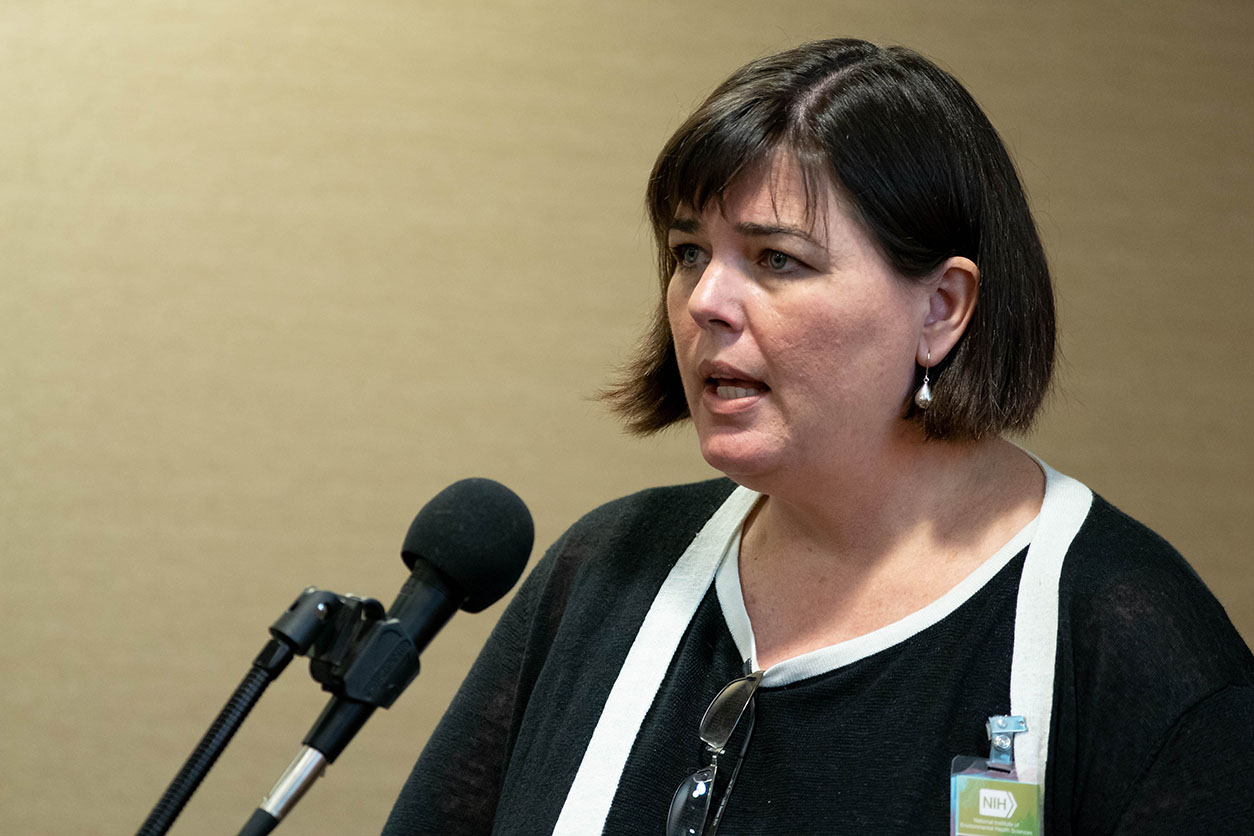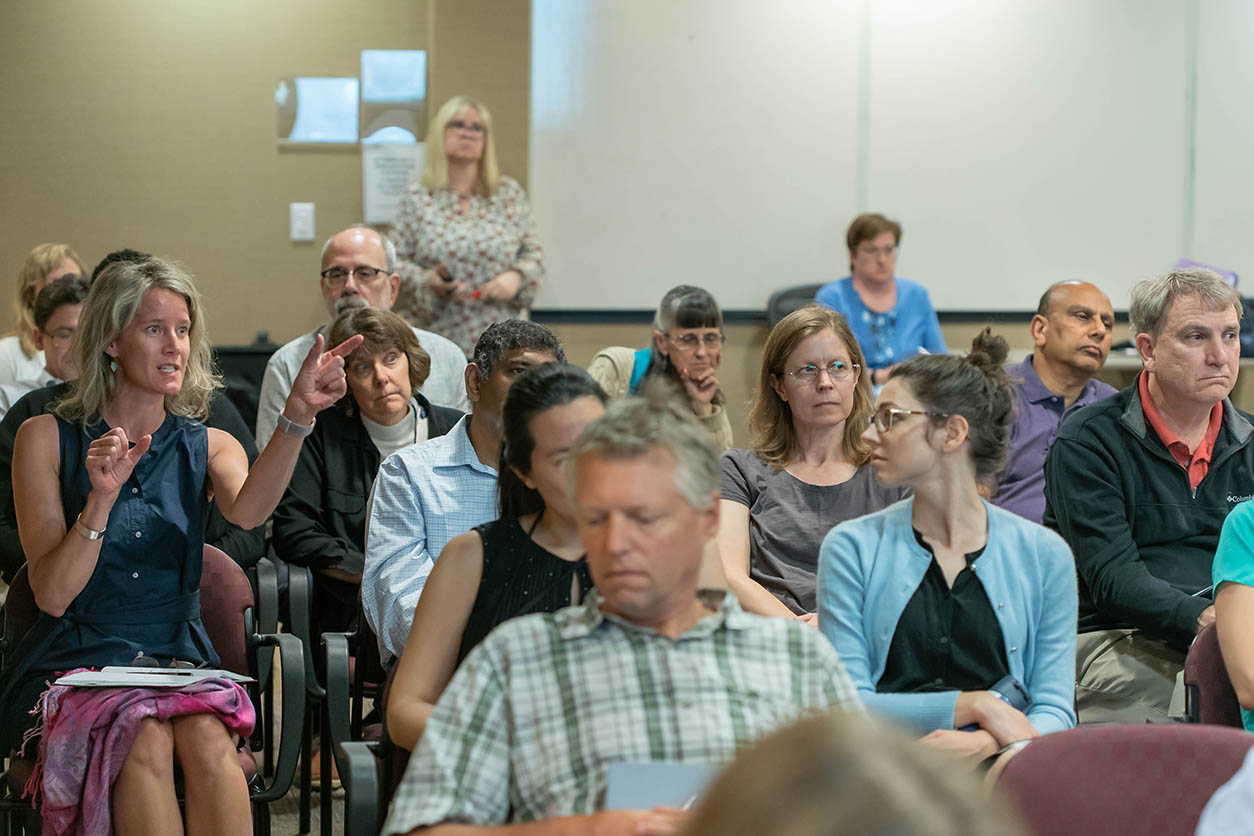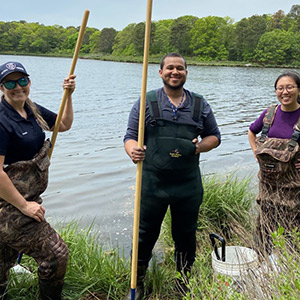“Arsenic is a reproductive toxicant,” said Molly Kile, Sc.D., from Oregon State University (OSU), during a May 28 talk in the NIEHS Keystone Science Lecture Seminar Series.
Compared with other women and babies, pregnant women exposed to arsenic gained less weight during pregnancy, and their babies were born earlier. Research led by Kile showed that together, these conditions indirectly reduced birthweight.
Kile studies potential health effects of early life exposure to arsenic by following a large group of women in Bangladesh during their pregnancies and tracking health conditions that they and their children experience over time.
“Molly is studying important health effects of arsenic in both women and children,” said Bonnie Joubert, Ph.D., a scientific program director at NIEHS and co-host of the lecture, along with Claudia Thompson, Ph.D., head of the NIEHS Population Health Branch. “Her research also provides insights to potential underlying epigenetic mechanisms, as well as the disrupting effects of arsenic on the developing immune system.”
 “Adverse health effects from arsenic persist long after the exposure,” said Kile. (Photo courtesy of Michael Garske)
“Adverse health effects from arsenic persist long after the exposure,” said Kile. (Photo courtesy of Michael Garske)Arsenic research in Bangladesh is vital
Tasteless, odorless arsenic is a naturally occurring metallic element found in groundwater in Bangladesh. Exposures in millions of people led the World Health Organization to declare a public health crisis.
Although arsenic is a known carcinogen, less is known about other health effects, particularly in young children. In pregnant women, arsenic can cross the placenta, potentially harming the fetus during development.
Health effects in young children
Building on the reduced birthweight finding, Kile examined health effects in children up to age five years. To learn about the children’s ability to resist disease, the infants in the study were vaccinated according to the official Bangladesh vaccination program. The prescribed vaccinations include diphtheria, which is a serious bacterial infection that affects mucous membranes in the throat and nose.
Kile’s study linked increased arsenic exposure with decreased antibodies for diphtheria. Because antibodies are the body’s defense against bacteria and viruses, children exposed to arsenic would be less able to ward off the disease.
 Michelle Heacock, Ph.D., left, joined in the discussion time after Kile’s talk. Heacock is a health scientist administrator in the NIEHS Hazardous Substances Research Branch. (Photo courtesy of Michael Garske)
Michelle Heacock, Ph.D., left, joined in the discussion time after Kile’s talk. Heacock is a health scientist administrator in the NIEHS Hazardous Substances Research Branch. (Photo courtesy of Michael Garske)Community engagement, better research
Kile has seen the effects of arsenic poisoning in the people of Bangladesh. “I want to help the people, work with organizations that take care of the sick, and provide useful information from research to facilitate safer drinking water,” she said.
“Our research relies on community health workers, midwives, epidemiologists, and others, both in Bangladesh and the U.S.,” she said. “We all worked together to develop prenatal and well-baby health care programs to raise awareness of and encourage effective health practices.” Her research has also informed Bangladeshi policy and practice related to providing safer drinking water options.
She expressed gratitude for research support from the Dhaka Community Hospital Trust and their commitment to outreach and community health programs.
“The commitment to community engagement exemplified by Kile’s team is a model for conducting research in resource-limited countries,” said Thompson. “The long-term relationships she developed have been critical to promoting the translation of science findings into public health action.”
(Carol Kelly is the managing editor in the NIEHS Office of Communications and Public Liaison.)









